The fashion industry is evolving these days, mainly because more and more people are interested in clothes made from sustainable materials and produced using eco-friendly methods.
As environmental concerns become more important to everyone, the 2025 Texworld NYC event presents a wonderful opportunity for industry professionals, designers, and fabric producers to come together and explore the future of textiles, especially with a focus on sustainability.
Happening from July 23rd to 25th, 2025, Texworld NYC will display some of the most innovative and environmentally friendly fabrics available, while also showing how sustainability is helping to shape the future of fashion.
In this blog post, we’ll take a look at the key trends in sustainable textiles, explore the exciting innovations making waves in the industry, and address some common questions about why eco-friendly fashion really matters.
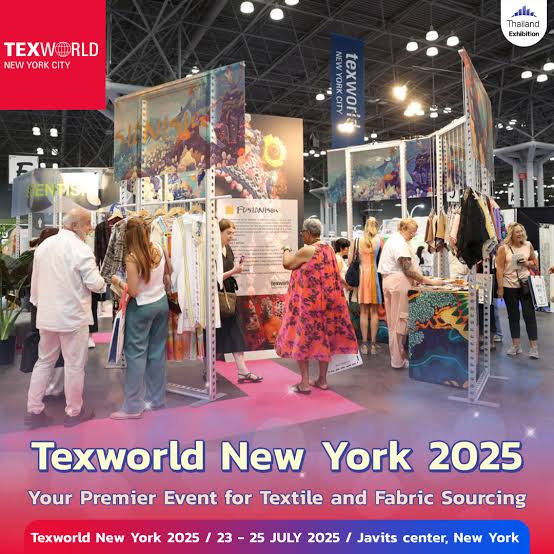
Photo credit: Facebook
 Why Sustainability Matters in Textiles
Why Sustainability Matters in Textiles
The fashion industry is widely recognized as one of the world’s biggest contributors to pollution, facing major environmental challenges like textile waste, the heavy use of water, and significant carbon emissions. As the need for more sustainable practices becomes increasingly urgent, sustainable textiles are stepping up as a promising answer.
These fabrics are crafted from eco-conscious materials, designed to cut down on waste, and made using manufacturing methods that are kinder to the environment.
At Texworld NYC 2025, you’ll see industry leaders displaying a fantastic range of innovative textile options, from materials made from recycled items to fibers sourced from plants. The aim is to really change how textiles are produced, lessen their impact on the planet, and guide the fashion world towards a more sustainable path.
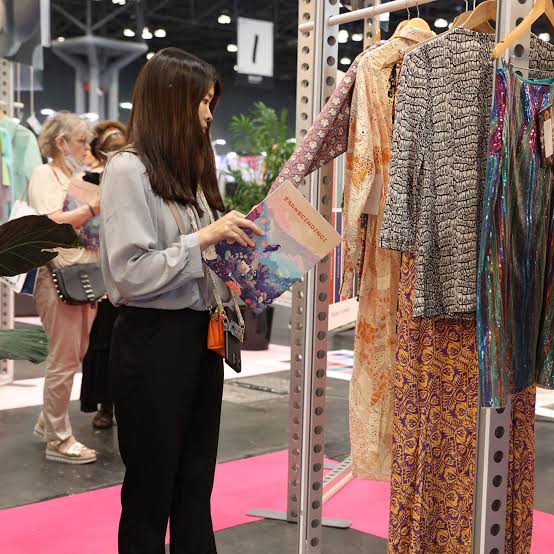
Photo credit: Messe Frankfurt
🌿 Key Sustainable Textile Trends at Texworld NYC 2025
Recycled Fabrics: More and more people are looking for textiles made from recycled materials, and Texworld NYC 2025 is set to showcase all the exciting new developments in this field.
Fabrics like recycled polyester, nylon, and even cotton are becoming popular in the fashion industry. They offer a fantastic way to cut down on waste while still delivering high-quality, durable textiles.
Organic and Plant-Based Fibers: Eco-friendly fibers such as hemp, linen, and Tencel are really at the heart of the sustainable fashion trend. These materials are much kinder to the planet, needing far less water and fewer chemicals to grow compared to conventional fibers like cotton.
Expect to see a big focus on these natural options as alternatives to synthetic fabrics at Texworld NYC 2025.
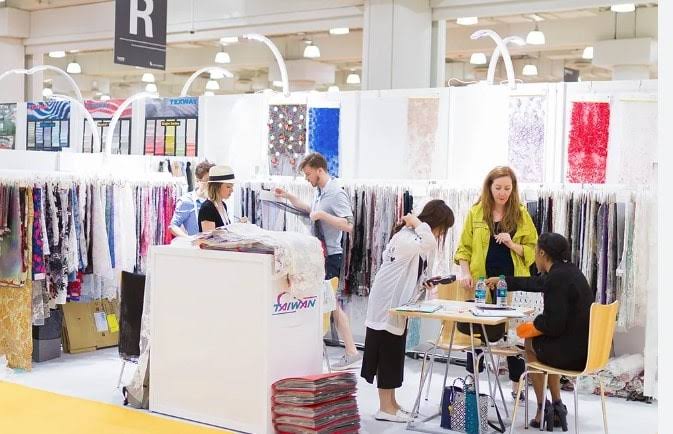
Photo credit: Sourcing Journal
Waterless Dyeing and Eco-Friendly Finishes: Old-fashioned dyeing processes are known for using huge amounts of water and harmful chemicals. Thankfully, innovations like waterless dyeing techniques and digital printing are providing more sustainable ways to color fabrics.
Texworld NYC 2025 will be highlighting the latest approaches to dyeing that significantly cut down on water use and are much better for the environment.
Circular and Closed-Loop Textiles: The concept of a circular economy in fashion—designing clothes and textiles so they can be easily recycled or upcycled—is really starting to gain traction. Systems where used garments and fabrics are brought back into the production cycle, known as closed-loop systems, will be a key theme at Texworld NYC 2025.

Photo credit: California Apparel News
These approaches help reduce waste and make sure materials can be used for much longer.
Biodegradable and Zero-Waste Fabrics: Exciting new fabrics that can break down naturally after use or help create zero-waste fashion are stealing the spotlight at Texworld NYC 2025.
Think materials like mushroom leather, fibers from pineapples, and textiles made from bamboo – they’re not just sustainable, but they also bring some truly unique textures and finishes to the table, really shaking up the world of fabrics.
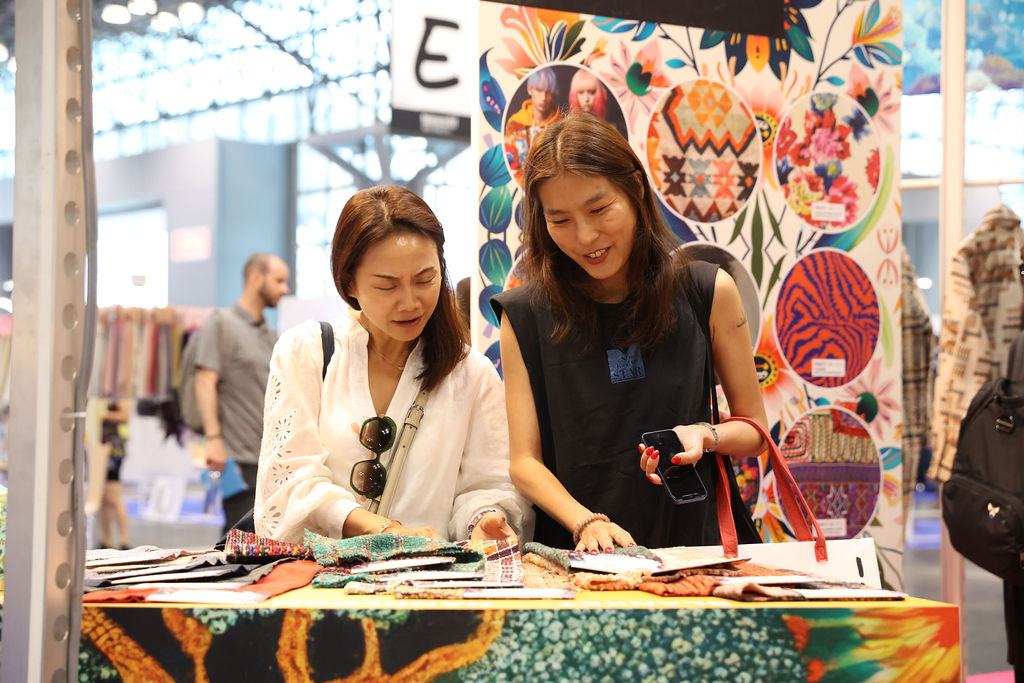
Photo credit: Texworld USA – Messe Frankfurt
🤚FAQs about Sustainable Textiles in Fashion
1. What are sustainable textiles?
Ans: Sustainable textiles are fabrics made in a way that’s kind to our planet. They’re produced using renewable resources, cut down on the use of harsh chemicals, and often involve greener manufacturing processes. You’ll commonly find materials like organic cotton, recycled polyester, and plant-based fibers in this category.
2. How are recycled fabrics made?
Ans: Recycled fabrics are all about giving old materials a new life. For instance, recycled polyester is typically made from discarded plastic bottles or worn-out clothes. These items are broken down, cleaned up, and then spun into fresh fabric. This method helps cut down on the need for brand-new materials and lessens the environmental impact of making new fabric.
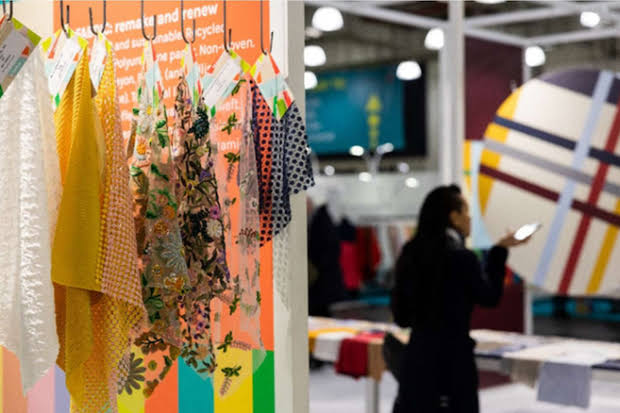
Photo credit: the-spin-off.com
3. Why is waterless dyeing important?
Ans: Regular dyeing methods tend to guzzle water and use lots of chemicals, which isn’t great for the environment. Waterless dyeing, on the other hand, offers a more eco-friendly approach. Techniques like air dyeing and digital printing use much less water and harmful chemicals while still delivering bright, durable colors.
4. Are sustainable fabrics more costly?
Ans: Sustainable fabrics might cost a bit more at first because making them is often more involved. However, they can end up saving you money over time. As more of these fabrics are made, prices should come down, and they also help lower the environmental costs associated with fashion.
5. How can shoppers back sustainable fashion?
Ans: Shoppers can support sustainable fashion by buying from brands that use eco-friendly materials, ensure ethical production, and follow fair trade guidelines. Other ways to help include choosing well-made clothes that last longer instead of buying lots of cheap items, picking second-hand clothing, or creatively repurposing old garments.
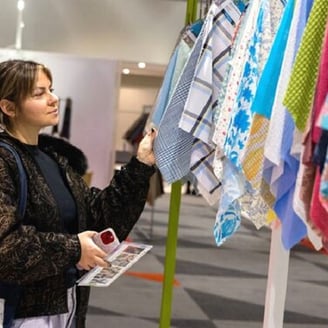
Photo credit: FashionNetwork
🎯 Final Insights: The Future of Sustainable Textiles in Fashion
Texworld NYC 2025 is set to be a really important event as the fashion world evolves, with a big focus on sustainability. You’ll see all sorts of exciting new materials there, like fabrics made from recycled stuff, textiles that can be used over and over, and even ones that will naturally break down, showing just how much potential there is for fashion to become more eco-friendly.
The main message is loud and clear: sustainability isn’t something fashion can just think about later anymore; it’s the future. As we head towards 2025 and beyond, we can definitely expect more brands to start using greener materials, get on board with circular fashion ideas, and find creative ways to lessen their impact on the planet.
For designers, makers, and shoppers, Texworld NYC 2025 will give everyone a peek into what fashion could look like when it really puts caring for the environment and being sustainable first, right from the start of making clothes all the way to the end.
Conclusion: Embrace Sustainable Fashion
The world of fashion is constantly changing, and Texworld NYC 2025 is leading the way in shaping the future of textiles, placing a strong emphasis on sustainability. Both designers and shoppers need to get on board with this change and champion the new ideas that help lessen fashion’s footprint on the planet.
By opting for sustainable materials and pushing for greener production techniques, we can all pitch in to create a fashion industry that’s not just about looking good, but also about being responsible, ethical, and kind to our Earth.
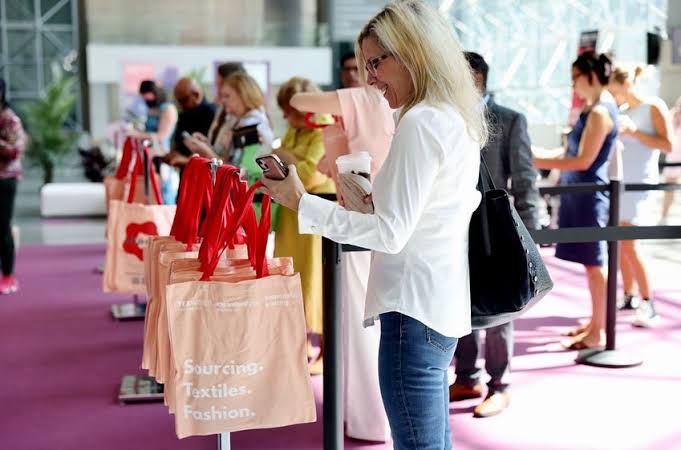
Photo credit: WWD
Blog Author: RAJA BAHAR KHAN SOOMRO

Top 10 Affordable Men’s and Women’s Footwear Brands for Stylish, Budget-Friendly Looks 2025
Top 10 Affordable Makeup Brands in 2025: Budget-Friendly, Reliable, and High-Quality
Mode in France Tokyo: French Ready‑To‑Wear & Accessories for SS 2026 in the Heart of Shibuya
How to Style Plus‑Size Outfits with 2025’s Hottest Trends: Powder Pink, Turn‑Up Denim & More
Recommend0 recommendationsPublished in apparel, celebrity fashion, Our Fashion Passion, Petite, Plus Size, Pop Fashion, street style, Uncategorized
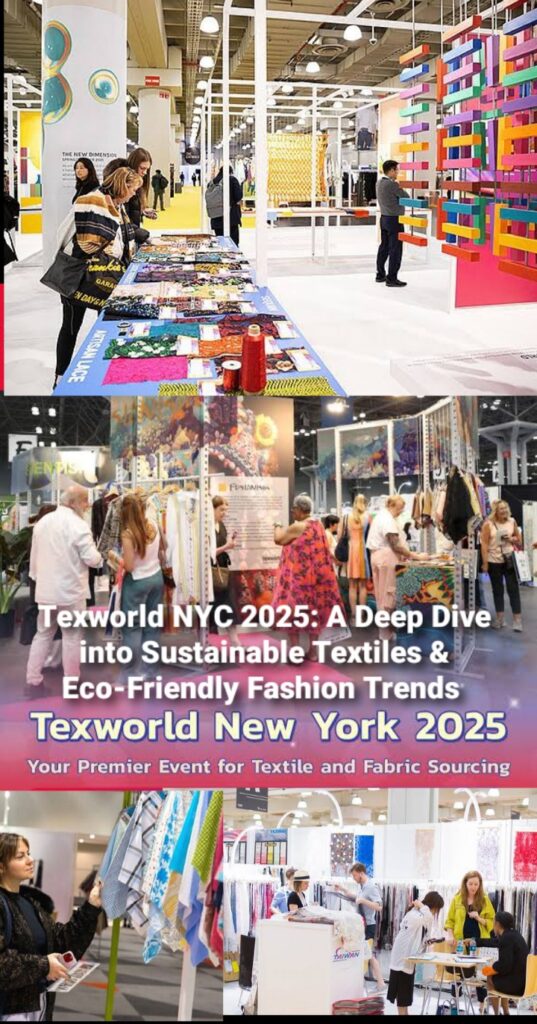

 Why Sustainability Matters in Textiles
Why Sustainability Matters in Textiles





